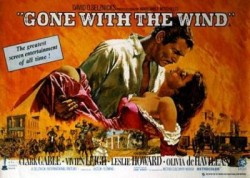
Anyone with even a casual interest in the history of the movies has almost certainly encountered the widely accepted “fact” that 1939 was the best year for movies ever. (TCM’s Robert Osborne never tires of reminding us of this.) The claim seems to be based on 1939 producing Gone with the Wind and The Wizard of Oz with everything else of even moderate value packed in afterwards to support what is to me an insupportable point. Or like the song says, “It ain’t necessarily so.” Of course, that statement means I have to attempt to support my assertion that 1939 is not the best year for movies. It’s a fool’s errand, but I’ll have a bash.
The truth is that any such claim for a best year is ultimately subjective and is therefore not actually provable one way or another. Also, we’re at a point now where movies as a viable art form are about 100 years old, and it seems absurd to think that a single year represents the best. It might be more reasonable to try to come up with the best year of a decade. Well, even if we approach this thing on that less grandiose basis, 1939 still strikes me as being a pretty shaky bet.
It would be interesting to learn exactly when the 1939 idea kicked in. I haven’t been able to come up with a definite answer, but I have a sneaky suspicion that it started in 1939 and was generated by the studios themselves to counteract the perceived disaster that 1938 had been. Financially, it had been something more than a perceived disaster— a situation made worse by the notorious exhibitors’ poll that labelled such luminaries as Katharine Hepburn, Mae West, Greta Garbo, Fred Astaire, Joan Crawford, and Marlene Dietrich “box office poison.” In that climate, the promotion of 1939 as some kind of watershed moment was essential.
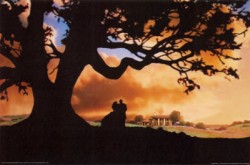
There’s no denying that there was a push toward quality with the studios—something that had the side-effect of a certain timidity, a sense of playing it safe, though not where Gone with the Wind was concerned. Whatever you think of the film—great American classic or four hour soap opera about two people with lousy timing—it was a ballsy undertaking for producer David O. Selznick, and much of the interest it generated was negative. A lot of people thought it was an insane undertaking and a lot of those people were hoping to see it fail, which, of course, it didn’t.
Legend and PR have a way of steamrolling facts, and, boy, do the misperceptions about 1939’s two most famous films—GWTW and The Wizard of Oz—pile up. Yes, Selznick had to get a special dispensation from the production code folks to allow Clark Gable to say, “Frankly, my dear, I don’t give a damn.” No, it was not the first time “damn” ever appeared in a movie. (It’s not even the first time it appears in GWTW.) It may, however, be the first time it appeared in an American film (the British never thought much about using it) since the introduction of the production code in 1934.
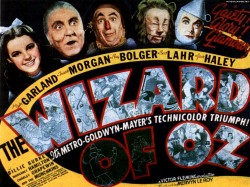
The Wizard of Oz has spawned even more peculiar legends, especially concerning the film being in color. I doubt anyone thought it in 1939, but a great many people seem to believe it’s the first color film, which is ridiculous. Some even believe that the black and white or, more correctly, sepia tone opening was shot that way because color wasn’t available. (Since this betrays a basic lack of knowledge about how movies are generally not shot in sequence, one wonders how these folks reconcile the ending not being in color.) Technicolor had been around for 20 years or more in 1939, and three strip Technicolor—the process used in 1939—had been in existence since 1934. The first entire feature in the process was Rouben Mamoulian’s Becky Sharp in 1935. That 1939 audiences didn’t remember that 1938’s The Adventures of Robin Hood had been in Technicolor—along with several other 1938 films and three earlier 1939 releases—is pretty far-fetched.
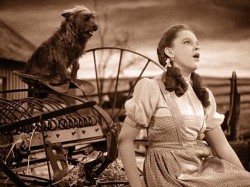
When looked at in more objective terms, 1939 was less the best year for movies than it was the slickest year for corporate-minded, committee-produced movies. They’re good movies, but by and large they’re more what might be called “product” than anything else. The fact that the two biggest titles are signed by Victor Fleming, but have significant parts that had nothing to do with Fleming, attests to that. In fact, Fleming was nowhere around when perhaps the most famous thing in The Wizard of Oz was shot—Judy Garland singing “Over the Rainbow.” The sequence was directed by King Vidor. What you have isn’t Victor Fleming’s The Wizard of Oz, it’s MGM’s The Wizard of Oz.
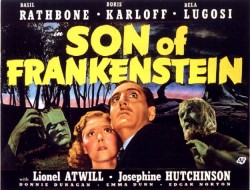
Of the most important films from 1939, very few can be called personal in the sense of being the vision of the director. Frank Capra’s Mr. Smith Goes to Washington, George Stevens’ Gunga Din, Leo McCarey’s Love Affair, John Ford’s Stagecoach, and Howard Hawks’ Only Angels Have Wings are clearly the work of those filmmakers. Ninotchka is largely identifiable as an Ernst Lubitsch film, but is a far cry from his best work and feels a little hampered by its obvious attempt to re-brand Garbo as something other than art house fare. And for better or worse—or a bit of both actually—Rowland V. Lee can lay claim to Son of Frankenstein. The thing is, however, that none of these represent the best of any of the directors responsible for them. Every one of them had made better movies before and would make—Rowland V. Lee to one side—better movies again.
My pick for best year—or at least best year of the 1930s, though it is perhaps my favorite year—would be 1932. It’s the year where all the kinks had been ironed out of the talkies and when some of the finest and most important filmmakers of the time were at the height of their powers—and of their artistic freedom. It wasn’t bad for stars, studios, or genres either. Just for the hell of it, let’s contrast some of those things with their 1939 counterparts. I’ll start with filmmakers.
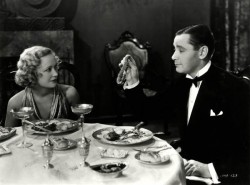
Since I’ve cited Ernst Lubitsch with Ninothcka, let’s look at Lubitsch in 1932. Instead of one film, Lubitsch turned out three films in 1932—Broken Lullaby, One Hour with You, Trouble in Paradise—not to mention doing one episode in the multi-director If I Had a Million. The three features and the section of the other film are pure Lubitsch, even though George Cukor started One Hour with You, only to have Lubitsch—who also produced the film—take over because he was unhappy with the results, despite the fact that he’d been directing Cukor’s direction all the time. I’d also say they’re all better than Ninotchka. I doubt many Lubitsch admirers would take serious issue with that—especially since 1929-1933 is the director’s richest period. Certainly, no one is likely to deny that Trouble in Paradise is better.
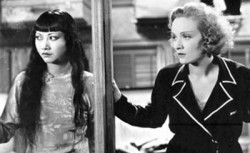
Not included in that 1939 list is Josef von Sternberg. The reason is simple. By 1939 this—one of the most important of all filmmakers—director was reduced to making a Wallace Beery B picture Segeant Madden. It is about as far from a significant 1939 film as possible—and even further removed from any of Sternberg’s best work. In 1932, on the other hand, he made both his masterpiece, Shanghai Express (also the highest grossing film of 1932), and perhaps his most iconic film, Blonde Venus. Similarly absent is Rouben Mamoulian, whose lot wasn’t as bad as Sternberg’s, but making a competent if not very exciting version of Clifford Odets’ play Golden Boy (both the author and the play are who and what are being satirized in the Coen Brothers’ Barton Fink) is a significant comedown from the cinematic fireworks of his 1932 releases, Dr. Jekyll and Mr. Hyde and Love Me Tonight.
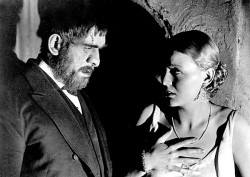
Universal’s “Ace” director James Whale’s fortunes had suffered since the Laemmle family lost the studio in 1936, and in 1939 he found himself marking time by helming a workmanlike version of The Man in the Iron Mask for independent producer Edward Small, while the studio he once dominated was preparing the biggest turkey of his career, Green Hell (1940). He may have been largely marking time in 1932 when he made Impatient Maiden, but it was better than these. Plus, 1932 also saw one of his best and most personal films, The Old Dark House
It was in 1932 that Tod Browning made his iconic Freaks. In 1939, he knocked out an enjoyable, rather silly, and appallingly transparent B mystery called Miracles for Sale—and for MGM, the same studio that had allowed him unprecedented (especially for them) freedom for years. In 1932, Cecil B. DeMille made the deliriously insane The Sign of the Cross. In 1939, he made the turgid western Union Pacific.
_thumb.jpg)
Look at 1932 vs. 1939 in terms of genres. Since we touched on Mamoulian, Whale and Browning, we’ve already hit three horror films from 1932—Dr. Jekyll and Mr. Hyde, The Old Dark House, and Freaks. It also gave us Robert Florey’s Murders in the Rue Morgue, Karl Freund’s The Mummy, Michael Curtiz’s Doctor X, Erle C. Kenton’s Island of Lost Souls, Charles Brabin’s The Mask of Fu Machu, and Victor Halperin’s White Zombie. In 1939, we get the previously mentioned Son of Frankenstein, Nick Grinde’s The Man They Could Not Hang, Elliott Nugent’s The Cat and the Canary, and Vincent Sherman’s The Return of Dr. X. If you insist on pressing the point, you can sort of add Rowland V. Lee’s Tower of London, and if you want pure embarassment, there’s Allan Dwan’s The Gorilla. It’s a very poor trade-off.
As for musicals, once you knock off The Wizard of Oz, the 1939 musicals are somewhere between tepid and bad. In fact, there almost aren’t any—apart from the Deanna Durbin movies, which are les musicals than films with a few songs. The less said about Edward Buzzell’s At the Circus—apart from “Lydia the Tattooed Lady,” which is appallingly staged—the better, though we’ll come back to that later. A case can be made, I suppose, for Babes in Arms, but my Mickey Rooney tolerance is limited.
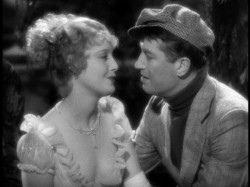
While 1932 isn’t conventionally thought of as a great year for musicals—that generally starts in 1933 with the advent of full-blown Busby Berkeley wiith 42nd Street and Fred and Ginger in Flying Down to Rio—it does have One Hour with You, Norman McLeod’s Horse Feathers, Leo McCarey’s The Kid from Spain (arguably the best of all Eddie Cantor movies), Frank Tuttle’s The Big Broadcast (a very odd movie that made Bing Crosby a star), and, of course, Love Me Tonight, which is very probably the best musical film of its kind ever made. (And I’m tempted to take off that “of its kind” qualifier, since I’m not convinced any musical has ever bested it.)
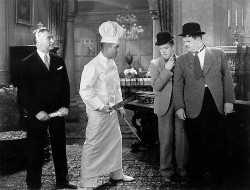
Comedians were not well-served by 1939. Already mentioned was the Marx Brothers picture At the Circus—a film that was outdistanced in 1929, 1930, 1931, 1933, 1935, and 1937, as well as by 1932’s Horse Feathers. In 1932, W.C. Fields was just coming into his own with Million Dollar Legs and in one episode of If I Had a Million, not to mention the short film The Dentist. These may not be the best of his films—though a case could be made for Million Dollar Legs—but compared to his 1939 effort, You Can’t Cheat on Honest Man, which traded on his famous radio feud with Edgar Bergen’s dummy, Charlie McCarthy, they represent a comedian on the rise, as opposed to one sharing the screen with a smart-mouthed and frequently tiresome dummy. Mae West entered movies with a spectacular debut in 1932 with Night After Night. In 1939, she made nothing. Laurel and Hardy’s 1932 feature, Pack Up Your Troubles mayn’t have been their best, but it’s better than The Flying Deuces in 1939. Plus, 1932 saw five classic shorts and three so-so ones. What else does 1939 offer? One good Bob Hope picture (The Cat and the Canary), one pretty good one (Never Say Die), and some dreck with the Ritz Brothers.
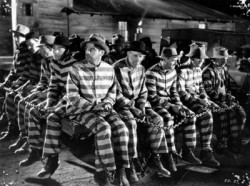
For socially or politically relevant movies, what 1939 has pretty much comes down to Capra’s Mr. Smith Goes to Washington—and it’s tepid stuff that wimps out, even for Capra. His 1932 film, American Madness, is fresher, more vibrant, and a lot bolder. But what of Mervyn LeRoy’s I Am a Fugitive from a Chain Gang? It still packs a wallop today—maybe too much of one. For political satire Alfred E. Green’s The Dark Horse makes any hint of satire on political corruption that might cling to the edges of Mr. Smith look silly.
And so it goes. I could go on at length about other 1932 releases like Tarzan the Ape Man, Grand Hotel, One Way Passage, Red Dust, The Man Who Played God, Jewel Robbery, The Half-Naked Truth, Sherlock Holmes, Once in a Lifetime, and Guilty As Hell. But if I haven’t made my point by now, I’m not going to.



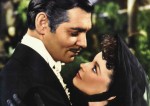
Thank you for the perspective. It does get my wheels turning.
I think your argument is aided by a couple of other facts. Hal Roach and Walt Disney were two of the 1930s’ biggest producers of short subjects, but they were on opposite trajectories. Roach’s Laurel & Hardy were going strong in ’32, and his “Our Gang” shorts of that year were arguably the franchise’s best; by ’39 it was over.
But it so happens that Disney didn’t release a feature film in ’39, though “Snow White” was in ’37; “Pinocchio” was Feb ’40 and “Fantasia” less than a year after that. I believe this helps the argument that ’32 was superior to ’39, because I tend to prefer Disney’s ’32 b&w shorts to those of ’39. But that may be simply Mouse vs. Duck.
Thank you for taking a poke at the conventional wisdom.
I agree that movie appreciation is too subjective for any blanket statement about “Best Year”.
Son of Frankenstein really isn’t very good. It’s okay, but Rathbone was miscast I think.
I maintain that 2010 may have been one of the best movie years… Machete, Shutter Island, Inception, True Grit, Black Swan…. certainly for me it was a very good year.
I think your argument is aided by a couple of other facts. Hal Roach and Walt Disney were two of the 1930s’ biggest producers of short subjects, but they were on opposite trajectories. Roach’s Laurel & Hardy were going strong in ‘32, and his “Our Gang” shorts of that year were arguably the franchise’s best; by ‘39 it was over.
Roach, of course, never released his own product. It was Pathe in the silent years, MGM in the late 20s through 1938. His stuff was then picked up by United Artists in 1940, though he went out of the short business in ’38 when he sold the Our Gang name and the remaining actors to MGM. Laurel and Hardy, of course, were out of the short film business in 1935.
Of course, Disney didn’t self-release till around 1953 or 54.
Son of Frankenstein really isn’t very good. It’s okay, but Rathbone was miscast I think.
I agree that it’s mostly just okay — though Lugosi and the set design and the Frank Skinner score and Atwill and the Monster finding Ygor’s body are all compensations. However, one of the few things that keeps it otherwise watchable for me is Rathbone’s overwrought and hammy performance. I’m not saying it’s good. I’m saying it keeps the way-too-long 97 minutes moving.
I maintain that 2010 may have been one of the best movie years… Machete, Shutter Island, Inception, True Grit, Black Swan…. certainly for me it was a very good year.
To me, it’s just too soon to tell how that’ll hold up. I do know that as much as I admired the year, several recent years had movies that got me higher than 2010 did. I will add that 2011 has not exactly been encouraging…yet.
1939 does have THE ADVENTURES OF SHERLOCK HOLMES going for it, as well as something called SEVEN LITTLE AUSTRALIANS, which I have yet to see.
I think 1939’s most notable contributions to film are really who was born in that year:
– Ian McKellen
– Francis Ford Coppola
– Harvey Keitel
– James Fox
– Terence Stamp
– Peter Bogdanovich
– Wes Craven
– John Cleese
– Lily Tomlin
1939 does have THE ADVENTURES OF SHERLOCK HOLMES going for it, as well as something called SEVEN LITTLE AUSTRALIANS, which I have yet to see.
I’m kind of over Adventures of Sherlock Holmes, but I feel certain Seven Little Australians is a masterpiece. You may have noted, however, that I limited myself to Hollywood films.
I’m kind of over Adventures of Sherlock Holmes, but I feel certain Seven Little Australians is a masterpiece.
I’m just wondering if it’s a prequel to TWELVE LITTLE INDIANS.
I think the myth of 1939 came about because that’s the year World War II started and American movies became darker in tone as a result. This made the 1939 films the Production Code’s finest hour. With conservative viewpoints dominating the Hollywood mindset for the next 30 years and with constant exposure on TV while uncensored pre-code films were not permitted, the 1939 films were enshrined as the pinnacle of Old Hollywood. Now that the pre-code films are readily available for viewing, it’s a different story
I’m just wondering if it’s a prequel to TWELVE LITTLE INDIANS.
I’m not sure, but I think you’ve upped the number of little Indians.
I’m not sure, but I think you’ve upped the number of little Indians.
I must be getting it confused with TEN ANGRY NIGGERS.
That’s the original Brit title of the Agatha Christie play about the jury?
That’s the original Brit title of the Agatha Christie play about the jury?
No, that’s WITNESS FOR THE ORIENT EXPRESS.
Oh, I was thinking of Indians for the Prosecution.
With conservative viewpoints dominating the Hollywood mindset for the next 30 years and with constant exposure on TV while uncensored pre-code films were not permitted
That’s kind of yes-and-no, isn’t it? Yeah, there’s a good bit more available now than there was, but a lot of pre-code movies were on TV at least by the time you and I were teenagers — in some cases earlier — and that’s quite a while ago. Just off the top of my head, I saw Island of Lost Souls, Shanghai Express, Blonde Venus, The Scarlet Empress, The Black Cat, 42nd Street, Golddiggers of 1933, Svengali, Doctor X, Five Star Final, One Way Passage, International House, Million Dollar Legs, Love Me Tonight, If I Had a Million, Night After Night, She Done Him Wrong, I’m No Angel, and Mystery of the Wax Museum by or before the age of 19.
Now that the pre-code films are readily available for viewing, it’s a different story
I’d put that at “should be,” since I’ve seen no movement away from the 1939 idea.
I should have said CERTAIN uncensored pre-code films as plenty of movies made before mid 1934 were available while movies such as James Whale’s FRANKENSTEIN and KING KONG were shown in truncated form by the time they made it to television. With the exception of GONE WITH THE WIND, I recall most of the 1939 films being on TV in my area a lot more than the earlier films with GUNGA DIN, BEAU GESTE, and STAGECOACH being ubiquitous on local stations (all 2 of them).
By the time I was 19 I had seen only 3 films on your list…ISLAND OF LOST SOULS, THE BLACK CAT and SVENGALI. I don’t recall any W.C. Fields, Mae West,or Marlene Dietrich movies in the mix although I’m sure there must have been some. Where are my old TV Guides when I need them? It wasn’t until I was off at college that I saw most of the rest of them.
Now that Warner owns Turner who owns the rights to all the great 1939 films, I would expect Robert Osborne to continue to tout their superiority with the national exposure of a cable network to back him up. What we need are more articles like this one (and I have read others) to let people know that classic Hollywood doesn’t begin and end with 1939.
With the exception of GONE WITH THE WIND, I recall most of the 1939 films being on TV in my area a lot more than the earlier films with GUNGA DIN, BEAU GESTE, and STAGECOACH being ubiquitous on local stations (all 2 of them).
It slightly horrifies me to think that the Tampa/St. Pete and Orlando stations were ahead of the curve! I’m not sure it’s so much that as it was that I had the advantage of one dying channel that ran nothing but their movie packages — RKO, Columbia, and for some reason Republic — and another that had just started up and for a long time had little else but old movies — Warner Bros. and MCA (Paramount and Universal)
Now that Warner owns Turner who owns the rights to all the great 1939 films, I would expect Robert Osborne to continue to tout their superiority
But they own a whole lot more than that.
The idea that 1939 was the best year for movies maybe that it contained one great movie from each genre. Even though they were not the best from each genre or director they were good movies. And since they all were in the same year it produced a cumulative effect.
Personally I think that 1999 is arguably the best year in film. If not one of the biggest or the most influential/transformative. American Pie, american beauty(not that i like that one), Green mile, The Matrix, Sixth Sense, The mummy, boondock saints, South Park, Pokemon, A bunch of sequels, etc. etc…
The idea that 1939 was the best year for movies maybe that it contained one great movie from each genre.
That’d work if 1939 had a great musical (it doesn’t), a great horror picture (it doesn’t), a great comedy (it doesn’t).
Personally I think that 1999 is arguably the best year in film.
I don’t think you’ll get much backing on that.
American Pie, american beauty(not that i like that one), Green mile, The Matrix, Sixth Sense, The mummy, boondock saints, South Park, Pokemon, A bunch of sequels, etc. etc…
And you just demonstrated why you’re probably not going to get much backing.
“I don’t think you’ll get much backing on that.”
That is why I included the caveat of it at least being one of the biggest or most influential years. And the other movies released that year made it very successful. Like star wars or toy story2.
You’re basing this on popularity, not quallity, I’m assuming.
I agree that 1932 was a much better year for movies. Besides many of the ones already mentioned (especially GRAND HOTEL!), you have SCARFACE, VAMPYR, THE BLUE LIGHT, LA NUIT DU CARREFOUR, RAIN and 20,000 YEARS IN SING SING. I always felt that GONE WITH THE WIND was over-rated, but I am a fan of WIZARD OF OZ. And GRAND HOTEL, or did I already mention that?
“You’re basing this on popularity, not quality, I’m assuming.”
Yes I am. I must also say that in 1999 I was 14 so watching the matrix was just about the greatest thing ever.
agree that 1932 was a much better year for movies. Besides many of the ones already mentioned (especially GRAND HOTEL!), you have SCARFACE, VAMPYR, THE BLUE LIGHT, LA NUIT DU CARREFOUR, RAIN and 20,000 YEARS IN SING SING
I wasn’t considering foreign films.
I am a fan of WIZARD OF OZ. And GRAND HOTEL, or did I already mention that?
Well, I am a fan of Grand Hotel.
Yes I am.
Box office receipts are not really good barometers of the quality of a movie.
[b]Box office receipts are not really good barometers of the quality of a movie[/b]
TITANIC is a perfect example of that!
TITANIC is a perfect example of that!
And Avatar, Transformers, Transformers 2, and on and on.
Speaking of Titanic — if you want the worst of two worlds, it appears that Cameron is bringing it back to theaters…in 3D.
Titanic in 3D? That is really depressing. “Git the shotgun and head for the hills Martha! Them Hollywood city folk done did it again!”
Cameron is proof that special effects often become a lot of sound and fury that are ultimately boring. He may be history’s finest example of that. Though George Lucas gave him good competition for that title with the Star Wars prequels. Ironically Cameron’s best movie IMHO was the low budget Terminator.
Ironically Cameron’s best movie IMHO was the low budget Terminator.
I don’t much like it either, but it’s definitely the least bloated.
I am very, very torn about this topic. Ken, we’ve emailed about stuff like this in the past and you know I’m more or less in your corner on this one, but it is a bit tricky. To me, I can’t help but think of 1932 and 1933 as almost one 2 year period of awesome stuff. As you noted, in 1933 we had the various Berkeley musicals, King Kong, Duck Soup and Diplomaniacs (either of which I’ll take gladly over the overly silly Million Dollar Legs), Queen Christina, The Invisible Man, Mystery of the Wax Museum, Lady Killer, Picture Snatcher, etc.
The biggest problem with 1933 is that Cavalcade won best picture and I really, really hate that movie. An uninformed person might watch that movie and think “This is the best 1933 had to offer?” and not be inclined to watch more films from that year.
But yeah, to me 1932-33 is the best era. Talkies had ironed out the kinks by then and it was a terrific oasis of sophistication before the Code hit in mid 1934.
Oh, and Lee Tracy was also at his peak in 1932-33.
Oh and I also forgot…1933 also had the best Mae West movies: She Done Him Wrong and I’m No Angel.
And to clarify the Cavalcade point, I had forgotten that Oscars were for the 1932-33 period at that point. It wasn’t until 1934 that it became a one year type deal like it is today (as in released Jan. 1 to Dec. 31 of the same year).
I understand where you’re coming from, though you left out International House, Tillie and Gus, Alice in Wonderland, Song of Songs, and Design for Living. I’d probably, on balance, rate 1933 just under 1932. I think the lack of any 1933 Sternberg, less 1933 Lubitsch, and lesser (though still good) Mamoulian loses the case for me. I think I could actually make a case for 1931, 1934, and maybe even 1935 over 1939 were I inclined to.
A person who picks Cavalcade solely because it won an Oscar deserves to remain uninformed. I can see no other reason to pick it, unless maybe there are some Clive Brook completists out there — and they should know better.
I think the overall problem is one of perception. You hinted at the exceptional nature of 1939 due to the bleh 1938 that preceded it (and an okay but not as great 1940 that followed). The fact that 1931, 1933, and 1934 were all solid pre code years as well may take a bit of the luster off of 1932 as this jaw dropping year of greatness. And truth be told, it may just come down to the notion that most people have seen GWTW or Wizard of Oz, whereas fewer have seen stuff like Love Me Tonight.
There are other things to consider: Studios were losing money at a scary pace circa 1932, so perhaps in Hollywood circles there just wasn’t a lot of fond nostalgia for that era?
MGM was allowed to set this 1939 framework decades ago, much like they also set the framework of “We made the best musicals by far, everyone else sucked” (even though in the 30s Warner Bros., Paramount, and RKO all made much better musicals).
One thing I do have to ponder is this: How could 1939 be so amazing if Hollywood’s #2 or 3 studio (Paramount) largely had a down year? Sure, the studio would rebuild around Hope and Crosby going into the 40s, but in the late 30s the studio was a shell of its early 30s peak.
And truth be told, it may just come down to the notion that most people have seen GWTW or Wizard of Oz, whereas fewer have seen stuff like Love Me Tonight.
That doesn’t actually change the question of actual quality in any significant way. I’d be willing to bet you that more people have seen Avatar than Sunrise. It doesn’t make Avatar better.
There are other things to consider: Studios were losing money at a scary pace circa 1932, so perhaps in Hollywood circles there just wasn’t a lot of fond nostalgia for that era?
A lot of the 1932 execs weren’t there by 1939, and even less by the time the myth attained unimpeachable status. If the execs had a single major gripe — or possible scapegoat — for 1932, it was probably that the directors had too much power. That certainly wasn’t true by 1939.
MGM was allowed to set this 1939 framework decades ago, much like they also set the framework of “We made the best musicals by far, everyone else sucked” (even though in the 30s Warner Bros., Paramount, and RKO all made much better musicals).
It’s called propaganda — something at which MGM (“more stars than there are in heaven”) excelled, much more than they ever excelled at making movies. Then again, those That’s Entertainment things were really a cash grab by a dying studio to put out really cheap movies to cash in on the nostalgia boom. The funny thing is that the musicals that were actually drawing nostalgia attention were Fred and Ginger at RKO, Busby Berkeley at WB, and those Technicolor things from Fox, notably The Gang’s All Here. Nothing at all to do with MGM.
One thing I do have to ponder is this: How could 1939 be so amazing if Hollywood’s #2 or 3 studio (Paramount) largely had a down year?
What did Paramount have that was really good in 1939? The Cat and The Canary and Midnight (which I admit I’m not that fond of) are all that come to mind. Never Say Die wasn’t bad, but it wasn’t great either. Of course, Crosby and Hope (together and separately), Preston Sturges, Billy Wilder, and the indefatigable Mitchell Leisen would pull them up in the 1940s.
I’m not sure I understood the Avatar/Sunrise comparison, but what I meant was the public at large simply views films like GWTW or Wizard of Oz as being bigger all time classics than the various 1932 movies mentioned. I’m not really sure how to compare GWTW to Trouble in Paradise (for instance), given that one is a Civil War epic that is nearly 4 hours long and the other is an 82 minute romantic comedy.
The Depression era aside, I believe it was already noted that a lot of pre code films were either hacked up or simply not shown for years. The simple lack of availability of these films led to post code 1939 classics being considered greater since everyone saw those films.
As far as 1939 Paramount goes, there’s Cat and Canary and Midnight as noted…otherwise I guess Beau Geste and maybe Union Pacific? Conversely while Paramount was down in 1939 some other studios were up compared to the early 30s (Fox, RKO, Columbia).
I’m not sure I understood the Avatar/Sunrise comparison
What’s not to get? You argued that more people have seen GWTW and Wizard of Oz than the 1932 crop. I pointed out that more people have seen Avatar than Sunrise and said that didn’t make Avatar the better film.
what I meant was the public at large simply views films like GWTW or Wizard of Oz as being bigger all time classics than the various 1932 movies mentioned.
Fine, but the public at large didn’t come up with the 1939 idea. It was put forth primarily by film historians who in many cases simply continue to parrot it.
I’m not really sure how to compare GWTW to Trouble in Paradise (for instance), given that one is a Civil War epic that is nearly 4 hours long and the other is an 82 minute romantic comedy.
First of all, GWTW is not a Civil War epic. It’s a really bloated soap opera set against an old south backdrop that includes the Civil War. The fact that the two main characters are a disreputable pair who endlessly bicker makes it more like Trouble in Paradise — a much less sophisticated one — than it might seem on the surface. Second, I find it very easy to determine which I think is the better film. If you’re going to put it on a direct comparison basis film-to-film, you can’t reasonably weight the years against each other. Third, it works both directions.
I believe it was already noted that a lot of pre code films were either hacked up or simply not shown for years.
I’d say it was more put forth anecdotally than noted. Of the 1932 films I named, the only ones I can think of that were not shown at all were The Old Dark House (missing) and Dr. Jekyll and Mr. Hyde (suppressed by MGM). As far as “hacked up,” there’s really only two — the two Mamoulians. Love Me Tonight remains truncated, but even in that form, I’d still rate it higher than any 1939 film you can name. All but the two named were in some kind of circulation. I’d personally seen all of them by 1975 — that means they’ve been being shown for some considerable time now.
The simple lack of availability of these films led to post code 1939 classics being considered greater since everyone saw those films
Okay, that might explain why they were considered greater. My point isn’t whether they were, since that’s a given. After all, there’s no myth to debunk without a myth in place. My point is that it is a myth. Are you saying the myth should go unchallenged? Or are you merely throwing out possible reasons for its existence in the first place?
As far as 1939 Paramount goes, there’s Cat and Canary and Midnight as noted…otherwise I guess Beau Geste and maybe Union Pacific?
I remembered Union Pacific after the fact. I always forget Beau Geste.
Conversely while Paramount was down in 1939 some other studios were up compared to the early 30s (Fox, RKO, Columbia).
Fox is always hard to gauge because so little of their early 30s stuff is out there even today. Of their 1932 offerings, I think all I’ve seen are Chandu the Magician, Sherlock Holmes, Call Her Savage, and a Will Rogers or two. But off the top of my head, I’m not coming up with anything that signficant from them in 1939 other than The Rains Came, Drums Along the Mohawk and, to stretch a point, The Little Princess. It’s mostly B stuff. RKO was just coming into its own in 1932. Funny thing is they start losing ground with the 1940s. Columbia was undeniably less disreputable by 1939, but apart from Mr. Smith, what memorable 1939 titles do they have?
Overall I am primarily throwing out various reasons why the 1939 myth is in place. The actual stance I’m taking is that 1932-33 is my favorite era of films, but that in the end it’s all subjective and a matter of opinion. That and the idea of Pre Code simply being thought of as an overall era and not in terms of particular years.
Oh, Columbia also did Only Angels Have Wings in 1939, so there’s another major effort. Let’s see…what else did Fox have out. Young Mr. Lincoln I guess, also the first couple of Sherlock Holmes movies with Rathbone.
in the end it’s all subjective and a matter of opinion.
Of course, it is, but so long as people like Osborne continue to state 1939 is the end-all-be-all as indisputable fact, I’m gonna call bullshit on it.
That and the idea of Pre Code simply being thought of as an overall era and not in terms of particular years.
Which has nothing to do with picking a year.
also the first couple of Sherlock Holmes movies with Rathbone.
I’m not sure those are more than glorified Bs when all is said and done. On that basis, you could toss in Charlie Chan at Treasure Island.
I’m coming rather late to this discussion, but Peter Bogdanovich has claimed semi-credit for the 1939 thing; according to him he picked that year as an arbitrary example in an article about how much better films were back then than they were by 1972 when he was writing the article. A few months later he apparently noticed a column by Richard Schickel doing something similar to his own, but declaring 1939 the best year outright (Bogdanovich agrees it wasn’t the best year ever for Hollywood). That seems to be where it comes from.
I’d never heard that, but it makes sense — and it makes sense that Schickel would take the idea and run with it. Schickel has always struck me as the ultimate in middle-brow.